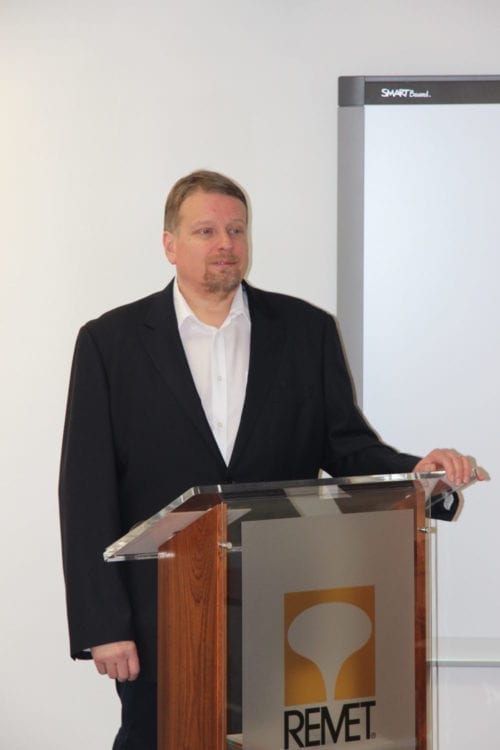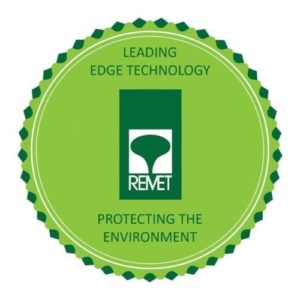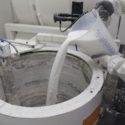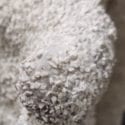Remet’s 2013 Investment Casting Research Papers

After another successful conference season, all of the staff at Remet would like to thank the organisers and those they met at each of the conferences we attended.
This year Remet presented at:
- EICF Technical Workshop – Process Materials for Tomorrows Challenges, Bordeux
- 7th World Seminar on Investment Casting, ISIC-Tokyo
- 60th Annual Conference of the Investment Casting Institute, Pittsburgh
Thank you to those that attended our presentations, if you were unable to make it or would like to know more, the below mentioned papers are available on our technical papers page, alongside some of our previous research papers into the investment casting process and the consumable materials used.
Presented by Dr. Grant Bradley, this paper formed the foundation of his presentations at both the EICF workshop and the ICI conference. Building on his previously presented works, Dr Bradley this year further developed the techniques used to measure the behaviour of waxes, whilst testing a new range of pattern waxes the REMET FastForm range.
The Remet FastForm® range of injectable waxes were designed to set up rapidly and are ideally suited for increasing productivity when injecting large patterns such as those found in precision investment cast pumps and valve bodies used in oil and gas industries. Initial results of DOE studies carried out with an MPI wax injector showed a marked decrease in cycle time while maintaining dimensional and surface finish quality comparable to standard wax. Establishing acceptable injection parameters for each wax injector often requires large number of samples to be injected. Thermophysical instrumentation offers methods independent of injection machine for characterizing these parameters. Differential scanning calorimetry (DSC) has been used to examine the crystallization and solidification of wax and wax components. DMA (Dynamic Mechanical Analysis) has been used to characterize solid shrinkage of wax. We have previously reported on the potential for controlled stress rheometry (CSR) and DMA as investigative tools to look at the viscoelastic properties of waxes across the solid/liquid phase boundary. These investigative approaches were correlated with results obtained with the MPI injector. This composite approach permits a potential user of pattern waxes such as FastForm® to quickly establish injection parameters from a reduced number of test injections.
Researched and authored by Joseph Stanco, Manueal Guerra and Charles Matzek and presented by Dr. Grant Bradley at the ISIC-Tokyo 2013, this paper gives consideration to methods and materials that improve the critical backup ceramic shell coating.
Investment casting shells are subjected to various mechanical and thermal stresses during the different stages of the investment casting process. The backup portion of the shell system is critical in providing support to the facecoat while maintaining overall shell strength during dewaxing, firing, and metal pour without distortion or loss of dimensional stability. Colloidal silica binders often provide minimal green strength to allow the shell to survive dewaxing but do not have adequate permeability to promote gas transfer through the shell wall. They also typically produce shells with higher than needed hot strength. Enhanced binders are engineered to provide a balance between increased green strength needed for dewaxing with sufficient hot strength for metal pouring and good gas flow. Studies of enhanced binder system, specifically, Remet’s REMASOL® ADBOND® 3301, were conducted and characterized for green, hot, and fired strengths along with dry times between dips and permeability. Results show that backups dipped in REMASOL ADBOND 3301 retained higher green strength to minimize distortion during shell build with improved permeability. Benefits of REMASOL ADBOND 3301 also include reduced dry times between dips to allow rapid building of shells with complex geometries that include cores, blind holes, and difficult to dry areas.
This paper prepared by Alfred Kaulius Jr. Engineering Manager at Howmet Castings, an Alcoa Business and presented by Thomas Scott, Sales & Marketing Director at Remet Corporation, at the ISIC-Tokyo conference. This paper considers the physical and chemical properties that enable partially stabilized zirconia crucibles, to be the material of choice for vacuum precision investment casting.
In the field of investment casting, the most common method of melting and preparing the alloy for casting is by use of induction heating and crucibles. A crucible is defined as; “1. A heat-resistant vessel for melting metals or minerals. 2. A severely trying test or experience.” In the use of crucibles for investment casting, it can be said that both definitions apply. Not only are they used for the melting of metals for subsequent casting into the shell, the conditions to which they are repeatedly subjected are a trying test, as well.
Crucibles used for investment casting must meet a set of criteria in order to be of maximum benefit to the caster. They must possess sufficient refractoriness for the alloy being melted. Crucibles must have adequate thermal shock resistance to withstand the severe thermal cycling undergone through the repeated charging, melting, and casting cycle. The melting vessel also must be compatible with the alloy being melted. This compatibility will also be dependent on the atmosphere (or lack thereof) in which the operation is occurring. Vacuum melt systems have different concerns than air melt systems.
< Back to News



